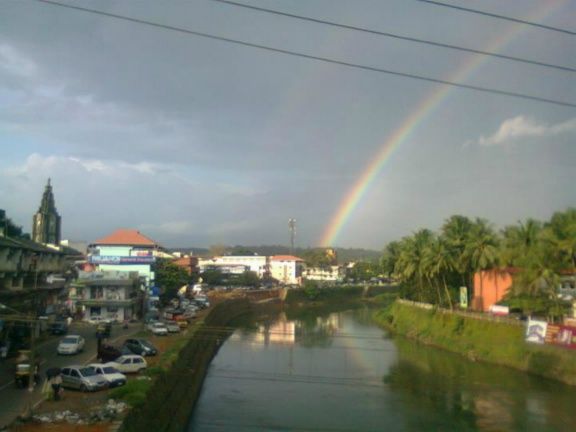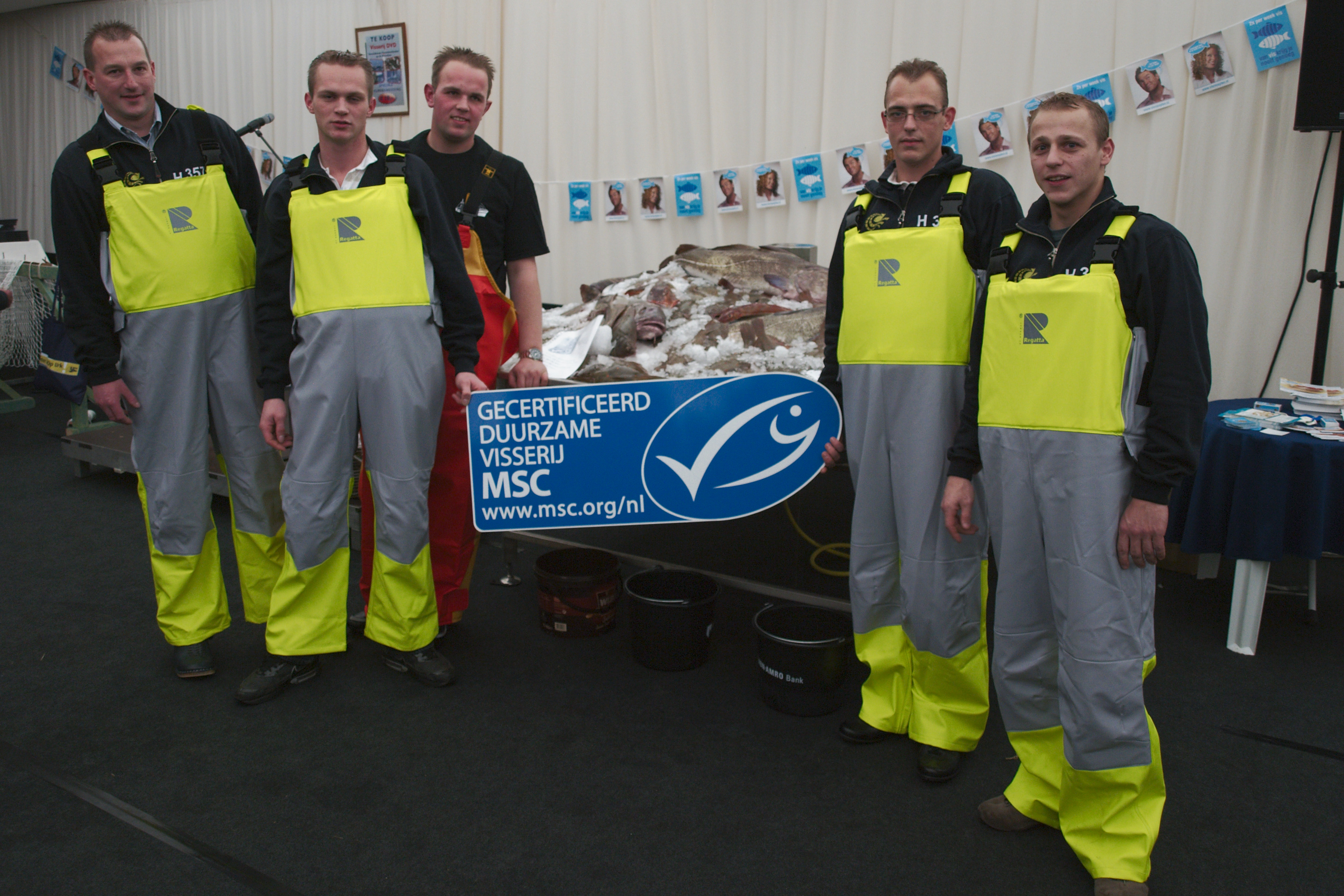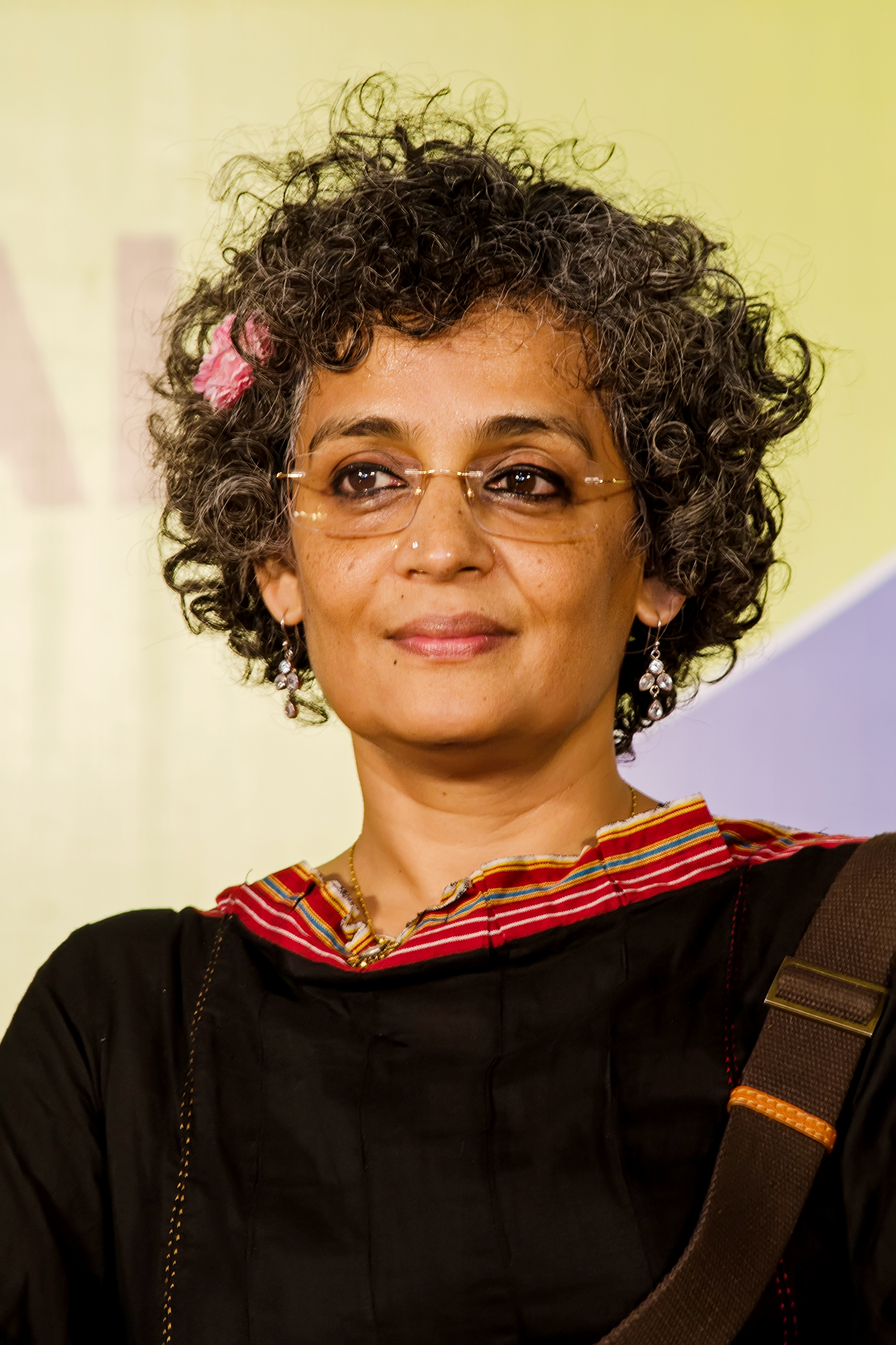|
Meenachil River
The Meenachil River or Meenachilaar (Malayalam: ), also known as Kavanar, Valanjar, is a river in Kerala. It is one of the most treacherous rivers in Kerala due to its flash floods, heavy undercurrents and woods and debris it carries from the mountains. It flows through the heart of Kottayam district, Kerala state in southern India. 78km long, originates in the Western Ghats main tributaries are Theekoy aaru from Vagamon hills, Poonjar Aaru and Chittar, flowing westward through the city of Kottayam and other towns like Poonjar, Teekoy, Erattupetta, Bharananganam, Pala, Mutholy, Cherpunkal, Kidangoor and Kumarakom before emptying into the Vembanad Lake on the shore of the Indian Ocean. General elevation ranges from 77 m to 1156 m in the highlands and less than 2 m in the lowlands and 8 to 68 m in the midlands. The Meenachil has a watershed area of 1208.11 km². The river has a total annual yield of 2,349 million cubic metre and an annual utilizable yield of 1110 ... [...More Info...] [...Related Items...] OR: [Wikipedia] [Google] [Baidu] |
Erattupetta
Erattupetta is a municipal town located in Kottayam district, close to the place Aruvithura, state of Kerala, India,. It is located 38 km east of Kottayam, the district capital. Erattupetta Grama Panchayath was founded in 1964 and upgraded to a municipality in 2015. The "Eraaru" part in all the variations of the names arose from the geographical location, where the two rivers (aaru) merge as single one and "Petta" means town. Erattupetta is situated in the foothills of High Ranges. Hence the place is also known as "the gateway of High range/Malanadu." Etymology The "Eraaru" part in all the variation of the names arose from the geographical location, where the two rivers (''aaru'') merge as a single one. Erattupetta is situated in the foothills of High Ranges. 'Peta' means town in Dravidian languages. Earlier it was known as 'Erapoli' or 'Erapuzha'. It was the commercial capital of the Poonjar principality until 1949. Economy In the past, hill produce from the Cardamom H ... [...More Info...] [...Related Items...] OR: [Wikipedia] [Google] [Baidu] |
Drainage Basin
A drainage basin is an area of land where all flowing surface water converges to a single point, such as a river mouth, or flows into another body of water, such as a lake or ocean. A basin is separated from adjacent basins by a perimeter, the '' drainage divide'', made up of a succession of elevated features, such as ridges and hills. A basin may consist of smaller basins that merge at river confluences, forming a hierarchical pattern. Other terms for a drainage basin are catchment area, catchment basin, drainage area, river basin, water basin, and impluvium. In North America, they are commonly called a watershed, though in other English-speaking places, "watershed" is used only in its original sense, that of a drainage divide. In a closed drainage basin, or endorheic basin, the water converges to a single point inside the basin, known as a sink, which may be a permanent lake, a dry lake, or a point where surface water is lost underground. Drainage basins are similar ... [...More Info...] [...Related Items...] OR: [Wikipedia] [Google] [Baidu] |
Meenachil
Meenachil is the north-eastern region of Kottayam district in Kerala, south India. The name originates from Meenakshi, the Hindu Goddess. Pala is the main city in Meenachil. The arterial river of the district is also named Meenachil. Geography The Meenachil River, also known as Kavanar, Gauna, Valanjar originates at ''vagamon'' in the Western Ghats of Kerala, flows westward through Erattupetta, Palai, Kidangoor, Ettumanoor and Kottayam. Its length is about 87 kilometers. Near Kottayam it splits into a number of distributaries before emptying into the Vembanad Lake. Kumarakom, the bird sanctuary and tourist resort is on one such branch. History The current Meenachil taluk was a principality under the local chieftains, the '' Meenachil Karthas'' (also known as ''Njavakkat Karthas'') before Marthanda Varma annexed it to Travancore in 1754. The name of the place comes from Goddess Meenakshi, the deity of the ''Karthas''. Veera Kerala Damodara Simhar was a chieftain belonging t ... [...More Info...] [...Related Items...] OR: [Wikipedia] [Google] [Baidu] |
2018 Kerala Floods
On 16 August 2018, severe floods affected the south Indian state Kerala, due to unusually high rainfall during the monsoon season. It was the worst flood in Kerala in nearly a century. Over 483 people died, and 15 are missing. About a million people were evacuated, mainly from Chengannur, Pandanad, Edanad, Aranmula, Kozhencherry, Ayiroor, Ranni, Pandalam, Kuttanad, Malappuram, Aluva, Chalakudy, Thrissur, Thiruvalla, Eraviperoor, Vallamkulam, North Paravur, Chellanam, Vypin Island and Palakkad. All 14 districts of the state were placed on red alert. According to the Kerala government, one-sixth of the total population of Kerala had been directly affected by the floods and related incidents. The Indian government had declared it a Level 3 Calamity, or "calamity of a severe nature". It is the worst flood in Kerala after the great flood of 99 that took place in 1924. 35 out of the 54 dams within the state were opened, for the first time in history. All five overflow gates of ... [...More Info...] [...Related Items...] OR: [Wikipedia] [Google] [Baidu] |
Sand Theft
Sand theft or unauthorised or illegal sand mining leads to a widely unknown global example of natural and non-renewable resource depletion problem comparable in extent to global water scarcity. Beach theft is illegal removal of large quantities of sand from a beach leading to full or partial disappearance of the beach. In India illegal sand mining is the country's largest organized criminal activity. Sand and beach theft by country Sand theft is a worldwide phenomenon. Beach theft, the large-scale removal of sand to the point that entire stretches of a beach disappear, is considerably less common. Two instances of beach thefts have been widely reported in the media: one in Hungary in 2007 and another in Jamaica in 2008. The beach that was stolen in Hungary was an artificially created one on the banks of a river. The other one is a genuine example of a beach theft. China Too much sand was taken from the Yangtze River to help build Shanghai in the 1980s and 1990s, prompting th ... [...More Info...] [...Related Items...] OR: [Wikipedia] [Google] [Baidu] |
Town On Banks Of Meenachil River
A town is a human settlement. Towns are generally larger than villages and smaller than cities, though the criteria to distinguish between them vary considerably in different parts of the world. Origin and use The word "town" shares an origin with the German word , the Dutch word , and the Old Norse . The original Proto-Germanic word, *''tūnan'', is thought to be an early borrowing from Proto-Celtic *''dūnom'' (cf. Old Irish , Welsh ). The original sense of the word in both Germanic and Celtic was that of a fortress or an enclosure. Cognates of ''town'' in many modern Germanic languages designate a fence or a hedge. In English and Dutch, the meaning of the word took on the sense of the space which these fences enclosed, and through which a track must run. In England, a town was a small community that could not afford or was not allowed to build walls or other larger fortifications, and built a palisade or stockade instead. In the Netherlands, this space was a garden, more ... [...More Info...] [...Related Items...] OR: [Wikipedia] [Google] [Baidu] |
Ettumanoor Mahadevar Temple
Ettumanoor Mahadeva temple is an ancient Shiva temple in Kottayam, Kerala, India. Temple tradition has it that the Pandavas and the sage Vyasa had worshipped at this temple. The name of the place has its origin from the word ''manoor'', which means "the land of deer." The temple is one of the major Shiva temples in Kerala, along with Vaikom Temple, Chengannur Mahadeva Temple, Kaduthruthy Mahadeva Temple, Ernakulam Shiva Temple, Vazhappally Maha Siva Temple and Vadakkunathan temple. The Temple The present temple building, with its gopuram and the fortress around it, was reconstructed in 717 ME (1542 AD). There are Dravidian mural paintings on the walls inside and outside of the main entrance. The fresco of Pradosha Nritham (Dance of Shiva) is one of the finest wall paintings in India. There is a golden flagstaff inside the temple topped with an idol of a bull surrounded by small bells and metal banyan tree leaves. In terms of architecture, these temples stand out to be a ... [...More Info...] [...Related Items...] OR: [Wikipedia] [Google] [Baidu] |
Aaraattu
Ārāttu () is an annual ritual performed during Hindu temple festivals in Kerala, India, in which a priest bathe the idol of a deity by dipping it in a river or a temple tank. It is mainly carried out at the end of a temple festival. ''Ārāttu'' is celebrated twice annually—the spring festival (March - April) and the autumn festival (October - November). A festival normally lasts 10 days. Major festivals One of the important Arattu in Kerala is conducted at Padmanabhaswamy Temple, Thiruvananthapuram by Travancore royal family, procession is carried out to Shankumugham Beach for the ceremony. The operations at the Trivandrum International Airport stops twice a year for the procession to pass through the runway to the Shankumugham Beach. At Ambalappuzha Sree Krishna Swamy Temple, the festival starts with a flag hoisting, after bathing the deities, ''ambalappuzha palpayasam'' (a sweet pudding) is offered to the gods. The eight-day long festival at Sree Poornathrayeesa Templ ... [...More Info...] [...Related Items...] OR: [Wikipedia] [Google] [Baidu] |
Aymanam
Aymanam is a village in the Kottayam District of Kerala, India. It is about 4 km from the railway station in Kottayam along the road to Parippu, and 85 km from the Cochin International Airport. Aymanam is the setting for Arundhati Roy's 1997 novel ''The God of Small Things''. Demographics India census, Aimanam had a population of 34,985 with 17,268 males and 17,717 females. Etymology ''Ay'' means "five" in and ''Vanam'' means "forest" in Malayalam. Hence, ''Aymanam'' means "five forests", which, according to tradition, were Vattakkadu, Thuruthikkadu, Vallyakadu, Moolakkadu and Mekkadu. They survive today only as "snake groves", where fertility idols, in the form of snakes, were worshiped under the trees. Families depute Brahmin once a year for ritualistic offering. Geography Lake Vembanad lies to the west of the village, near Kumarakom, with the Meenachil River providing its water supply, which often floods from June to August due to regular monsoons. Consequently, ... [...More Info...] [...Related Items...] OR: [Wikipedia] [Google] [Baidu] |
Illegal Fishing
Illegal, unreported and unregulated fishing (IUU) is an issue around the world. Fishing industry observers believe IUU occurs in most fisheries, and accounts for up to 30% of total catches in some important fisheries. Illegal fishing takes place when vessels or harvesters operate in violation of the laws of a fishery. This can apply to fisheries that are under the jurisdiction of a coastal state or to high seas fisheries regulated by regional fisheries management organisations (RFMO). According to the UN Food and Agriculture Organization (FAO), Fisheries and Aquaculture Department, illegal fishing has caused losses estimated at US$23 billion per year. Unreported fishing is fishing that has been unreported or misreported to the relevant national authority or RFMO, in contravention of applicable laws and regulations. Unregulated fishing generally refers to fishing by vessels without nationality, vessels flying the flag of a country not party to the RFMO governing that fishing a ... [...More Info...] [...Related Items...] OR: [Wikipedia] [Google] [Baidu] |
Illegal Mining
Illegal mining is mining activity that is undertaken without state permission, in particular in absence of land rights, mining licenses, and exploration or mineral transportation permits. Illegal mining can be a subsistence activity, as is the case with artisanal mining, or it can belong to large-scale organized crime, spearheaded by illegal mining syndicates. On an international level, approximately 80 percent of small-scale mining operations can be categorized as illegal. Despite strategic developments towards " responsible mining," even big companies can be involved in illegal mineral digging and extraction, if only on the financing side. Regional Issues Sub-Saharan Africa Spurred by widespread poverty and a lack of alternative income-earning opportunities, illegal artisanal mining is a well-documented phenomenon in sub-Saharan Africa. While legalization opportunities for artisanal and small scale mining are often available, inefficient government bureaucracy structures can m ... [...More Info...] [...Related Items...] OR: [Wikipedia] [Google] [Baidu] |
The God Of Small Things
''The God of Small Things'' is a family drama novel written by Indian writer Arundhati Roy. Roy's debut novel, it is a story about the childhood experiences of fraternal twins whose lives are destroyed by the "Love Laws" prevalent in 1960s Kerala, India. The novel explores how small, seemingly insignificant things shape people's behavior and their lives. The novel also explores the lingering effects of casteism in India. It won the Booker Prize in 1997. ''The God of Small Things'' was Roy's first book and only novel until the 2017 publication of ''The Ministry of Utmost Happiness'' twenty years later. She began writing the manuscript for ''The God of Small Things'' in 1992 and finished four years later, in 1996. It was published the following year. The potential of the story was first recognized by Pankaj Mishra, an editor with HarperCollins, who sent it to three British publishers. Roy received £500,000 in advance and rights to the book were sold in 21 countries. Plot The ... [...More Info...] [...Related Items...] OR: [Wikipedia] [Google] [Baidu] |




.jpg)


